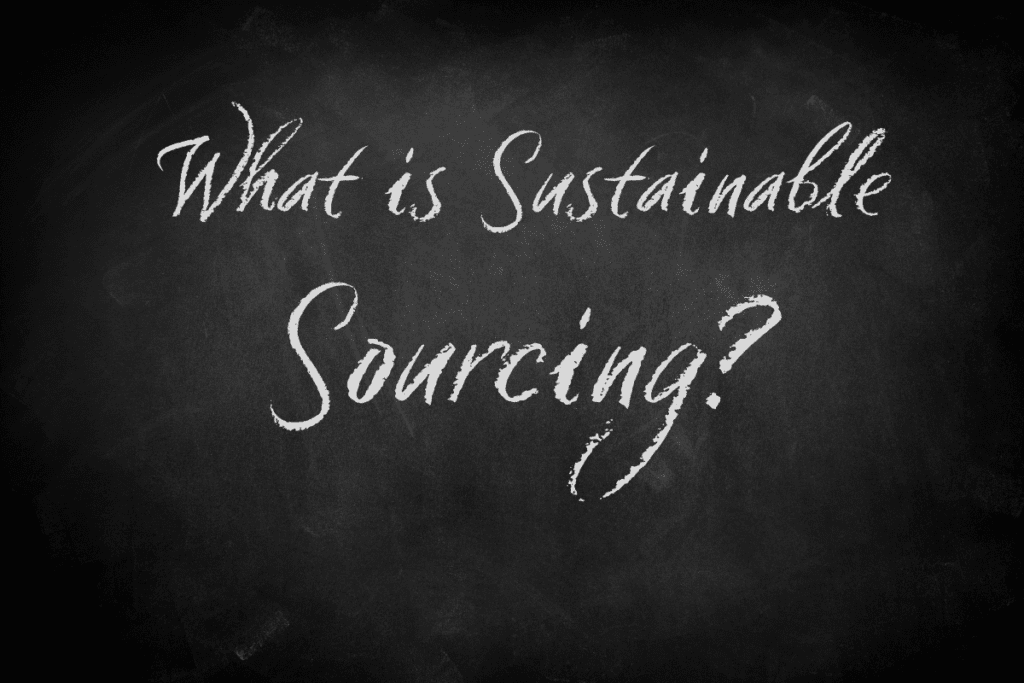The Ultimate Guide to Understanding Sustainable Sourcing: Definition, Examples, and Best Practices
What value will you get if you read this article?
By reading this article, you will help you in understanding sustainable sourcing. This guide discusses what it means, its importance, examples of real-world sustainable sourcing practices, and the best strategies for implementing sustainable sourcing programs. You will also learn how sustainable sourcing relates to supply chain management, the benefits it brings, and how it differs from ethical sourcing.
Additionally, you will discover tips, best practices, and policy examples for enhancing sustainability in your procurement processes. With case studies, resources, and a focus on addressing challenges, this ultimate guide provides all the information you need to adopt sustainable sourcing in your organization.
What is Sustainable Sourcing?
Definition of Sustainable Sourcing
Sustainable sourcing is the integration of social, environmental, and ethical factors into the sourcing process. It involves procuring goods and services in a way that minimizes negative impacts on the environment, promotes social responsibility, and creates value for all stakeholders involved. Through sustainable sourcing, organizations aim to ensure the long-term availability of raw materials, reduce waste, and enhance the overall sustainability of their operations and supply chains.
The 7 Pillars of Sustainable Sourcing
When it comes to sustainable sourcing, there are seven key pillars organizations should consider:
1. Ethical Sourcing:
This pillar focuses on sourcing practices that align with social responsibility and respect for human rights.
2. Environmental Sustainability:
Organizations need to minimize their environmental impact by sourcing materials and products that are sustainably produced, reducing waste, and promoting energy efficiency.
3. Supplier Engagement:
Building strong relationships with suppliers is essential for effective sustainable sourcing. Collaboration and communication with suppliers help establish common goals and promote sustainability throughout the supply chain.
4. Stakeholder Collaboration:
Engaging with stakeholders, such as local communities, NGOs, and government agencies, is crucial for sustainable sourcing. Collaboration ensures that sourcing practices align with the needs and expectations of all stakeholders involved.
5. Supply Chain Transparency:
Transparent supply chains enable organizations and consumers to make informed decisions. By providing visibility into sourcing practices and supply chain activities, organizations foster trust and accountability.
6. Risk Management:
Identifying and managing risks associated with sourcing is vital for sustainable sourcing. Organizations should proactively assess potential risks, such as environmental disasters or social controversies, and have strategies in place to mitigate them.
7. Continuous Improvement:
Sustainable sourcing is an ongoing journey. Organizations should strive for continuous improvement by setting goals, measuring progress, and adapting practices to emerging sustainability trends and challenges.
The Benefits of Sustainable Sourcing
Implementing sustainable sourcing practices can bring numerous benefits to organizations and the environment. Some key advantages include:
1. Enhanced Reputation: Organizations that prioritize sustainability and practice responsible sourcing build a positive reputation, attracting socially conscious consumers and stakeholders.
2. Risk Mitigation: By considering environmental and social factors in sourcing decisions, organizations reduce the risk of supply chain disruptions, reputational damage, and legal issues.
3. Cost Savings: Sustainable sourcing can lead to cost savings in the long run through reduced waste, improved efficiency, and better resource management.
4. Innovation and Collaboration: Sustainable sourcing encourages innovation as organizations explore new ways of producing and sourcing materials. It also fosters collaboration with suppliers, stakeholders, and competitors to drive positive change within industries.
5. Improved Stakeholder Relationships: Engaging with stakeholders and demonstrating commitment to sustainable practices helps build strong relationships and trust, leading to long-term partnerships and support.
Differences between Ethical Sourcing and Sustainable Sourcing
While ethical sourcing and sustainable sourcing share some similarities, they are not interchangeable terms. Ethical sourcing primarily focuses on labor conditions, fair wages, and human rights within the supply chain. It ensures that workers’ rights are respected and protected, fostering socially responsible business practices.
On the other hand, sustainable sourcing encompasses a broader scope by integrating environmental and social considerations along with ethical practices. It takes into account the entire value chain, from sourcing raw materials to the end product, and aims to minimize environmental impact while promoting social responsibility.
Developing Effective Sustainable Sourcing Programs and Practices
Effective sustainable sourcing programs are essential for organizations committed to sustainability. Here are some key pieces of advice for developing and implementing sustainable sourcing programs:
Advice for Developing Sustainable Sourcing Programs
1. Set Clear Objectives: Clearly define your organization’s sustainability goals and align them with your sourcing activities. Set measurable targets and integrate them into your procurement processes.
2. Conduct Supplier Assessments: Evaluate your suppliers based on their sustainability practices and performance. Consider factors such as their environmental impact, worker conditions, and adherence to ethical standards. Select suppliers who share your commitment to sustainability.
3. Collaborate with Suppliers: Engage in open and ongoing communication with your suppliers. Collaborate on sustainability initiatives and share best practices. Encourage suppliers to adopt sustainable practices and provide support and resources for their implementation.
4. Educate and Empower Employees: Build awareness and knowledge among your employees about sustainable sourcing practices. Provide training and resources to empower them to make sustainable decisions and integrate sustainability into their day-to-day activities.
5. Monitor and Measure Performance: Regularly monitor and measure the performance of your sustainable sourcing programs. Use key performance indicators (KPIs) to assess progress, identify areas for improvement, and celebrate successes.
Examples of Effective Sustainable Sourcing Practices
To illustrate effective sustainable sourcing practices, let’s explore two examples:
1. Adidas: The sports apparel company has implemented a holistic approach to sustainable sourcing. Adidas launched the “Parley for the Oceans” initiative, which focuses on sourcing and producing sportswear made from recycled ocean plastic. By transforming waste into high-performance products, Adidas demonstrates its commitment to sustainability and raising awareness about marine pollution.
2. IKEA: The furniture retailer has set ambitious sustainability goals, including using only renewable or recycled materials by 2030. IKEA actively engages with suppliers, conducts regular audits, and provides training on sustainable practices. The company encourages suppliers to reduce carbon emissions, conserve water, and ensure responsible forest management, among other initiatives.
Through these examples, it is evident that organizations can make a significant impact by adopting sustainable sourcing practices. By aligning sustainability goals with sourcing decisions and collaborating with suppliers, organizations can drive positive change within their industry and contribute to a more sustainable future.
Sustainable Sourcing and Supply Chain
Importance of Sustainable Supply Chains
Sustainable sourcing and supply chain management go hand in hand to create a more sustainable and resilient business ecosystem. Sustainable supply chains consider environmental and social factors at every stage of the value chain, from sourcing raw materials to delivering the final product to the consumer.
Implementing sustainable supply chains helps organizations minimize their environmental footprint, reduce waste, and ensure ethical practices throughout the supply chain. It improves resource efficiency, builds resilience against disruptions, and enhances stakeholder relationships. By prioritizing sustainability, organizations can create long-term value and contribute to a more sustainable future.
Sustainable Sourcing and Supplier Engagement
Supplier engagement is a critical component of sustainable sourcing. Collaborating with suppliers helps align sustainability goals, address shared challenges, and foster innovation within the supply chain. Organizations should engage suppliers early on in the sourcing process and communicate their sustainability expectations.
This engagement can involve sharing sustainability guidelines, conducting audits, and providing support and resources for sustainable practices. By working together, organizations and suppliers can drive sustainable sourcing initiatives, promote responsible practices, and achieve mutual benefits.
Sustainable Sourcing by Industry
Sustainable sourcing practices can be applied across various industries. Here are a few examples:
Food Industry:
Sustainable sourcing in the food industry involves procuring ingredients from sustainable agricultural practices, supporting local farmers, and promoting fair trade. It also includes reducing food waste throughout the supply chain and implementing sustainable packaging solutions.
Fashion Industry:
Sustainable sourcing in the fashion industry focuses on using environmentally friendly materials, promoting fair labor practices, and reducing the overall carbon footprint. It also involves eliminating hazardous substances from manufacturing processes and adopting circular economy principles.
Technology Industry:
Sustainable sourcing in the technology industry focuses on responsible mineral sourcing, reducing electronic waste, and ensuring responsible manufacturing processes. It also involves promoting ethical labor conditions in the production of electronic devices.
By implementing sustainable sourcing practices within their respective industries, organizations can lead the way in creating a more sustainable and responsible business landscape.
Tips and Best Practices for Sustainable Sourcing
Aligning Sustainability Goals with the Organization
To achieve successful sustainable sourcing, it is crucial to align sustainability goals with the overall objectives and values of the organization. Sustainability should be integrated into the organization’s mission, vision, and business strategy. By making sustainability a core part of the organization’s identity, sustainable sourcing becomes a natural extension of the organization’s values and operations.
Setting Goals and Measuring Progress
Setting clear and measurable goals is essential for successful sustainable sourcing. These goals should be aligned with the organization’s overall sustainability objectives and cover various aspects, such as reducing environmental impact, promoting ethical practices, and supporting community development.
Measuring progress against these goals is equally important. Regularly track and evaluate key performance indicators (KPIs) to assess the effectiveness of sustainable sourcing practices. This data provides insights into areas for improvement, highlights successes, and allows for better decision-making.
Engaging with Current Suppliers
Engaging with current suppliers is a crucial step in implementing sustainable sourcing practices. Organize supplier workshops or training sessions to educate them about sustainability requirements and best practices. Encourage open dialogue and collaboration to understand their challenges and identify opportunities for improvement. Suppliers who embrace sustainability can become valuable partners in achieving sustainable sourcing goals.
Adding Sustainability to the RFP Process
When issuing requests for proposals (RFPs), it is important to include sustainability criteria alongside traditional factors such as price, quality, and delivery times. By explicitly stating sustainability requirements in RFPs, organizations send a clear message to suppliers about their commitment to sustainable sourcing. This encourages supplier compliance and enables organizations to select suppliers who share their sustainability vision.
Creating a Public-Facing Sustainable Sourcing Policy
A public-facing sustainable sourcing policy communicates an organization’s commitment to sustainability to its stakeholders, customers, and the general public. The policy should outline the organization’s objectives, key initiatives, and progress towards sustainable sourcing goals. By transparently sharing this information, organizations build trust, enhance their reputation, and inspire others to adopt sustainable practices.
Policy Examples and Further Resources
Sustainable Sourcing Policy Examples
To assist you in developing your sustainable sourcing policy, here are some examples from leading organizations:
1. Unilever Sustainable Sourcing Policy: Unilever’s policy focuses on responsible sourcing, supplier engagement, and supporting smallholder farmers.
2. Patagonia Supplier Responsibility: Patagonia’s supplier responsibility policy emphasizes fair labor practices, safe working conditions, and environmental responsibility throughout the supply chain.
3. IKEA Supplier Code of Conduct: IKEA’s code of conduct for suppliers outlines expectations related to sustainability, ethical practices, and human rights.
Additional Resources for Procurement Sustainability Research
For further information on sustainable sourcing and procurement sustainability research, check out these resources:
1. Global Reporting Initiative (GRI): GRI provides guidelines and standards for sustainability reporting, including procurement and supply chain sustainability.
2. Sustainable Purchasing Leadership Council (SPLC): SPLC offers resources, case studies, and tools to support organizations in implementing sustainable procurement practices.
3. United Nations Global Compact (UNGC): UNGC provides guidance on sustainable sourcing, supplier engagement, and responsible business practices.
Case Studies and Examples of Sustainable Sourcing
Sustainable Sourcing Practices of H&M Group
H&M Group is committed to sustainable sourcing practices throughout its value chain. The company focuses on using sustainable materials, reducing waste, and promoting responsible production. H&M Group actively engages with suppliers, invests in innovation, and collaborates with stakeholders to drive positive change within the fashion industry.
Sustainable Sourcing Practices of Patagonia
Patagonia, a leading outdoor apparel company, is renowned for its sustainable sourcing practices. The company emphasizes fair trade, social responsibility, and environmental stewardship. Patagonia works closely with suppliers to ensure responsible manufacturing processes, reduce waste, and promote transparency within its supply chain.
Sustainable Sourcing Practices of Costa Coffee
Costa Coffee is committed to sourcing coffee sustainably and ethically. The company collaborates directly with coffee farmers, supports sustainable farming practices, and ensures fair trade. Costa Coffee’s sustainable sourcing approach aims to improve the livelihoods of coffee farmers and protect the environment in coffee-growing regions.
Addressing Challenges in Sustainable Sourcing
While sustainable sourcing brings many benefits, it also poses challenges that organizations must address. Some of the common challenges include:
1. Supply Chain Complexity: As supply chains continue to expand globally, managing sustainability across complex networks becomes more challenging. Organizations must navigate cultural differences, regulatory requirements, and varying levels of awareness and prioritization of sustainability across suppliers.
2. Supplier Compliance: Ensuring supplier compliance with sustainability standards is a constant challenge. Organizations need robust monitoring and auditing mechanisms to verify that suppliers adhere to sustainable sourcing practices.
3. Cost Considerations: Implementing sustainable sourcing practices can require upfront investments, such as certifications, audits, and supplier development programs. Balancing these additional costs with the economic viability of sourcing decisions can be challenging.
4. Limited Transparency: Achieving transparency throughout the entire supply chain can be difficult, especially in industries with multiple layers of suppliers. Lack of visibility can hinder organizations’ ability to identify potential risks, assess suppliers’ sustainability performance, and make informed sourcing decisions.
To address these challenges, organizations can invest in technology solutions, establish collaborative partnerships, and create industry-wide initiatives that promote transparency and sustainability across supply chains.
FAQs
Q: What is sustainable sourcing?
Sustainable sourcing refers to the process of selecting and procuring goods and services in a socially and environmentally responsible manner, taking into consideration the long-term sustainability of the supply chain.
Q: How does sustainable sourcing help companies?
Sustainable sourcing helps companies take responsibility for their supplier’s practices, reduce environmental impact, improve working conditions, and contribute to the overall sustainability of their supply chain.
Q: Why is sustainable sourcing important?
Sustainable sourcing is important because it helps companies reduce their environmental footprint, promote social equity, meet regulatory requirements, enhance brand reputation, and gain a competitive advantage.
Q: What are some examples of sustainable sourcing practices?
Some examples of sustainable sourcing practices include sourcing materials from renewable sources, supporting fair trade and ethical suppliers, promoting sustainable agriculture, reducing waste and carbon emissions, and ensuring fair labor practices.
Q: How can sustainable sourcing benefit developing countries?
Sustainable sourcing can benefit developing countries by creating economic opportunities, supporting local communities, promoting sustainable agriculture practices, and improving supply chain transparency.
Q: What is the role of supply chain sustainability in sustainable sourcing?
Supply chain sustainability is crucial in sustainable sourcing as it ensures that the entire supply chain, from raw material extraction to product disposal, follows sustainable practices, reducing environmental impact and promoting social responsibility.
Q: How can companies incorporate sustainable sourcing into their procurement process?
Companies can incorporate sustainable sourcing into their procurement process by setting sustainability criteria for supplier selection, conducting regular audits and assessments, collaborating with suppliers to improve sustainability performance, and monitoring and reporting progress.
Q: How does sustainable sourcing contribute to reducing scope 3 emissions?
Sustainable sourcing contributes to reducing scope 3 emissions by prioritizing suppliers with low carbon footprints, promoting energy-efficient production processes, and encouraging the use of renewable energy sources throughout the supply chain.
Q: What advice can you give for companies looking to adopt sustainable sourcing strategies?
Some advice for companies looking to adopt sustainable sourcing strategies includes setting clear sustainability goals and targets, engaging with suppliers and stakeholders, conducting thorough supply chain assessments, investing in sustainable technology and innovation, and continuously monitoring and improving sustainability performance.
Q: How are companies increasingly embracing sustainable sourcing practices?
Companies are increasingly embracing sustainable sourcing practices by integrating sustainability criteria into their procurement policies, collaborating with suppliers to implement sustainable practices, implementing traceability systems, and actively participating in sustainable supply chain initiatives such as the Unilever Sustainable Living Plan.
Conclusion
Sustainable sourcing stands at the forefront of modern procurement practices. As this guide has elucidated, it’s not just about environmental consciousness but encompasses a holistic approach that integrates social responsibility, ethical considerations, and long-term business strategy. From understanding its core pillars to recognizing its tangible benefits and challenges, sustainable sourcing is a comprehensive endeavor.
Organizations that adopt these practices position themselves for resilience, reputation enhancement, and long-term success. As the global business landscape continues to evolve, sustainable sourcing remains a key differentiator, ensuring both ethical integrity and operational sustainability.
If you liked this article, remember to subscribe to MiamiCloud.com. Connect. Learn. Innovate.








